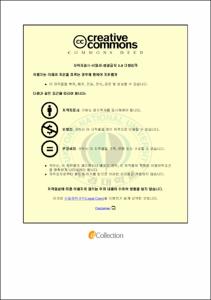중국 개혁개방 이후 농촌 노동력 이주의 역사과정 및 영향요인 분석
- Alternative Title
- The Historical Process of Rural Labour Migration after China's Reform and Analysis of Its Influencing Factors
- Abstract
- Abstract
In this study, the historical process of rural labor migration to cities in the conversion period of China was summarized. Based on this, the influencing factors of rural labor migration were analyzed and concluded. Finally policy advice was given to promote the development of urbanization and economy in China.
Since the implementation of economic reform began in 1978, China has experienced rapid social transformation and change. One of the most striking phenomena in this process is a large-scale rural labor migration to cities, its social and economic impacts are broad and far-reaching. In stages of the conversion, rural labor migration has different characteristics, the influencing factors are various and complex. Therefore, in this study, the historical process of rural labor migration to cities in the conversion period of China was summarized. Then the quantitative analysis was done on the characteristics of the factors such as household registration system, labor market segmentation, migration cost, urban unemployment scale and rural-urban income inequality. Additionally, based on the Todaro model, econometric model was established. The impacts of urban-rural income gap, urban unemployment scale, and China’s unique regime on rural labor migration were stressed by macroeconomic data analysis.
From the study, it was found that the rural-urban income gap remained as the main attraction for rural labors. Although the urban unemployment scale hindered rural labor migration to a certain extent, new employment opportunities in the city were more attractive to rural labors; In addition, China's policy system is becoming looser for rural labor migration to city, however, the institutional problem of dual urban and rural household registration system still existed as the biggest obstacle for rural labor migration to cities.
- Issued Date
- 2013
- Awarded Date
- 2013. 2
- Type
- Dissertation
- Publisher
- 부경대학교
- Alternative Author(s)
- Li,Qian
- Affiliation
- 부경대학교 대학원
- Department
- 대학원 국제통상물류학과
- Advisor
- 김은채
- Table Of Contents
- < 목 차 >
표 목차 ⅳ
그림 목차 ⅳ
ABSTRACT ⅴ
제 Ⅰ 장 서 론 1
제 1 절 연구배경 및 연구목적 1
제 2 절 연구의 방법 및 구성 2
제 Ⅱ 장 농촌 노동력 이주에 관한 이론적 배경 4
제 1 절 연구 범위 및 정의 4
제 2 절 고전이론 5
가. Lewis의 Dual Sector model 5
나. Ranis-Fei model 및 Jogenson model 6
다. Todaro model 6
제 3 절 중국내 연구 8
가. 이주 결정요소 9
나. 이주 과정 12
제 Ⅲ 장 개혁개방 이후의 농촌 노동력 이주의 역사과정 14
제 1 절 노동력 이주의 제한단계(1978-1983) 14
제 2 절 노동력 이주의 활약단계(1984-1988) 17
제 3 절 노동력 이주 정책의 조절단계 (1989-1991) 21
제 4 절 노동력 이주의 절정단계 (1992-2000) 22
제 5 절 노동력 합리적 이동단계(2000-2010) 27
제 Ⅳ 장 농촌 노동력 이주하는 영향요인 분석 35
제 1 절 호적제도 35
가. 호적제도 생성 및 의미 35
나. 호적제도 영향 36
제 2 절 노동력시장 분할 37
제 3 절 노동력 이주 자본금 38
가. 이주과정 교통비용 38
나. 도시 생활비용 38
다. 가계 심리적 비용 39
마. 농업수입 상실 기회비용 39
제 4 절 도시 실업규모 40
제 5 절 도·농 수입격차 41
가. 개혁개방 이후 도·농 수입격차추세 분석 41
나. 도·농 주민수입의 구성 42
제 Ⅴ 장. 중국 농촌 노동력 이동 규모의 실증분석 45
제 1 절 기본가설 45
제 2 절 Todaro의 인구이동 모델의 계량모델 46
제 3 절 변수 선택 및 데이터 47
가. 종속 변수 47
나. 독립 변수 48
다. 더미 변수 48
제 4 절 모델추측결과 및 평가 49
제 5 절 모델결과 분석 51
가. 소득격차 영향 51
나. 실업규모 영향 51
다. 제도요인 영향 52
제 Ⅵ 장 결 론 53
제 1 절 요약 및 시사점 53
제 2 절 한계점 및 향후 연구 과제 55
참고문헌 56
- Degree
- Master
- Appears in Collections:
- 대학원 > 국제통상물류학과-FTA비즈니스전공
- Files in This Item:
-
-
Download
 중국 개혁개방 이후 농촌 노동력 이주의 역사과정 및 영향요인 분석.pdf
기타 데이터 / 904.69 kB / Adobe PDF
중국 개혁개방 이후 농촌 노동력 이주의 역사과정 및 영향요인 분석.pdf
기타 데이터 / 904.69 kB / Adobe PDF
-
Items in Repository are protected by copyright, with all rights reserved, unless otherwise indicated.